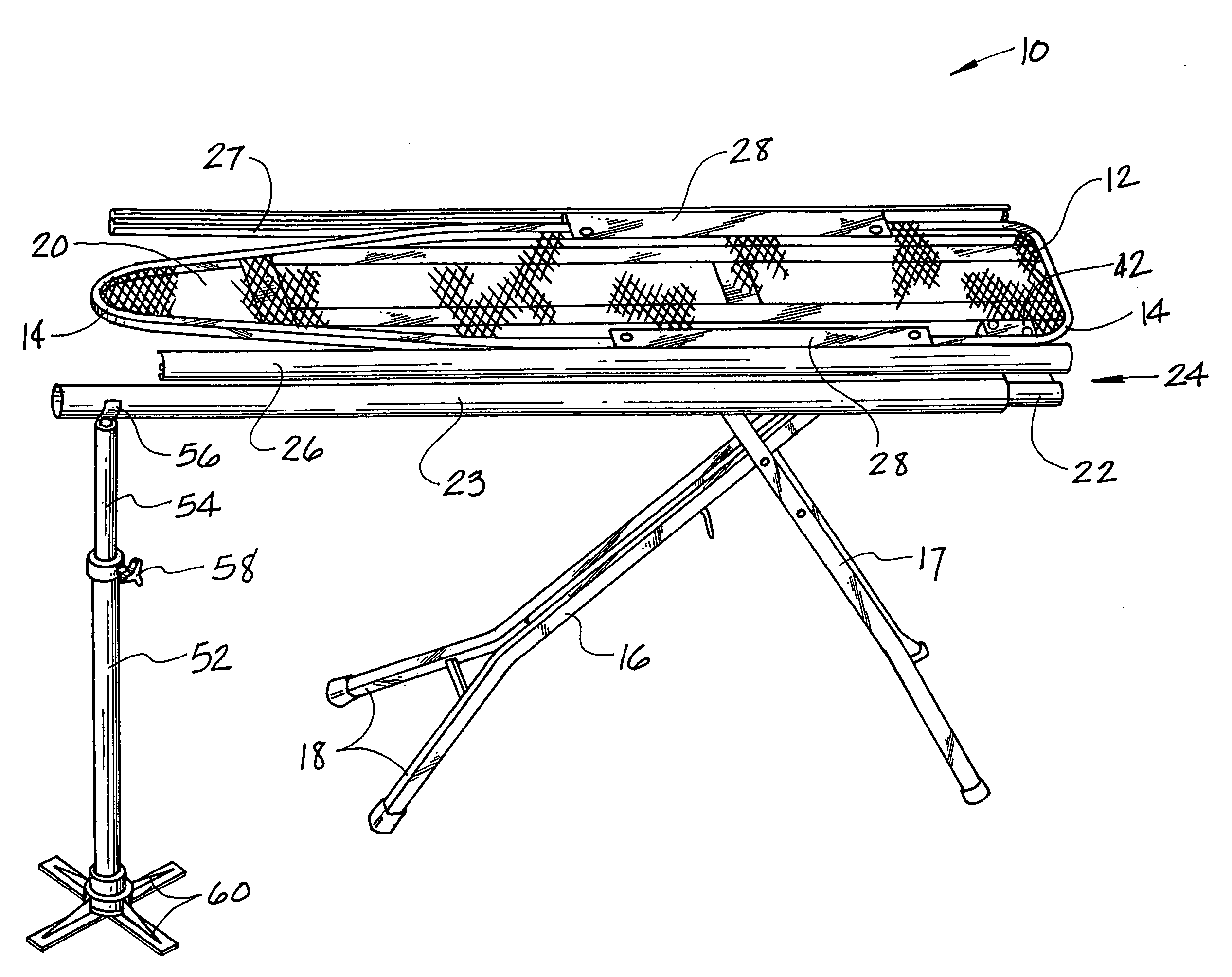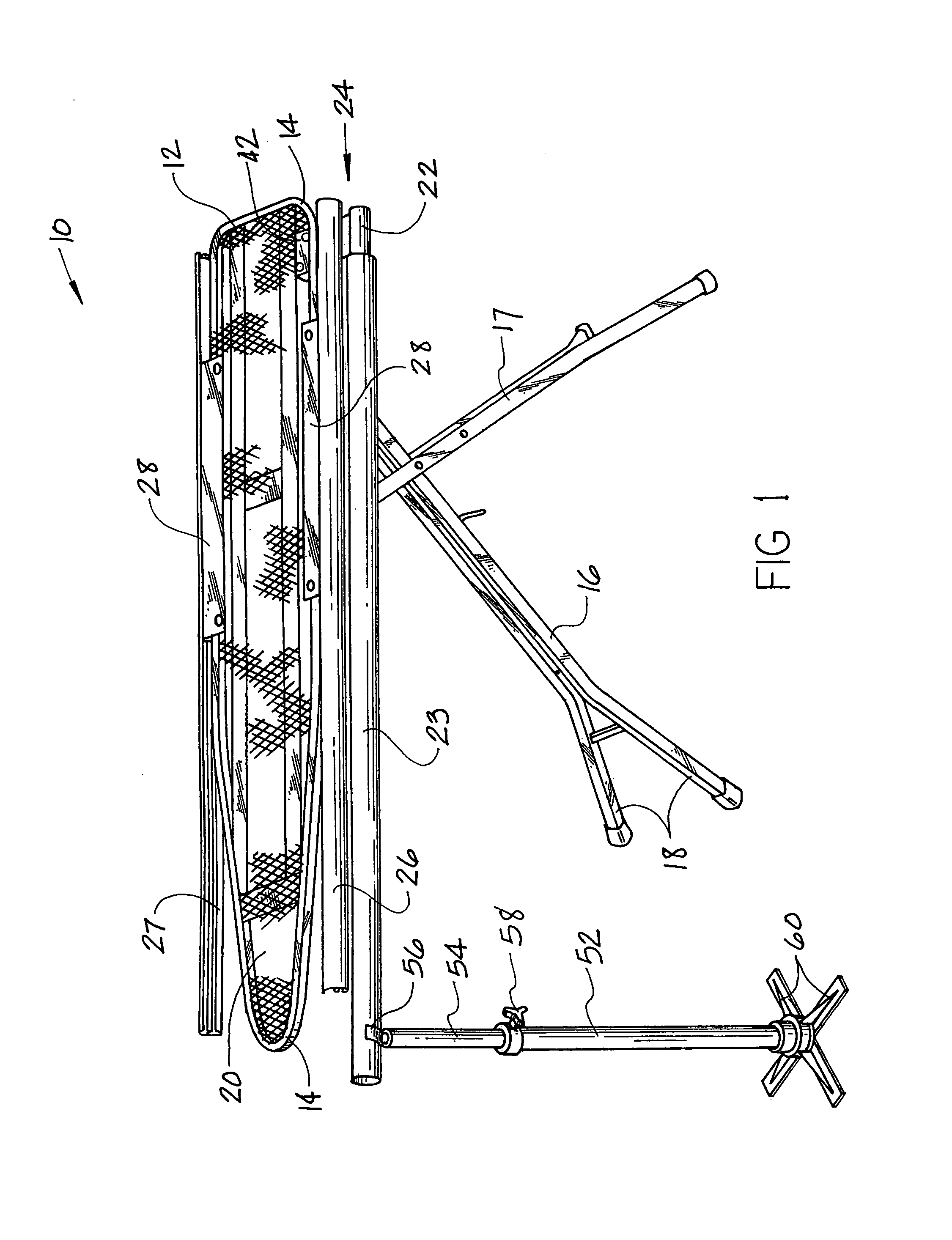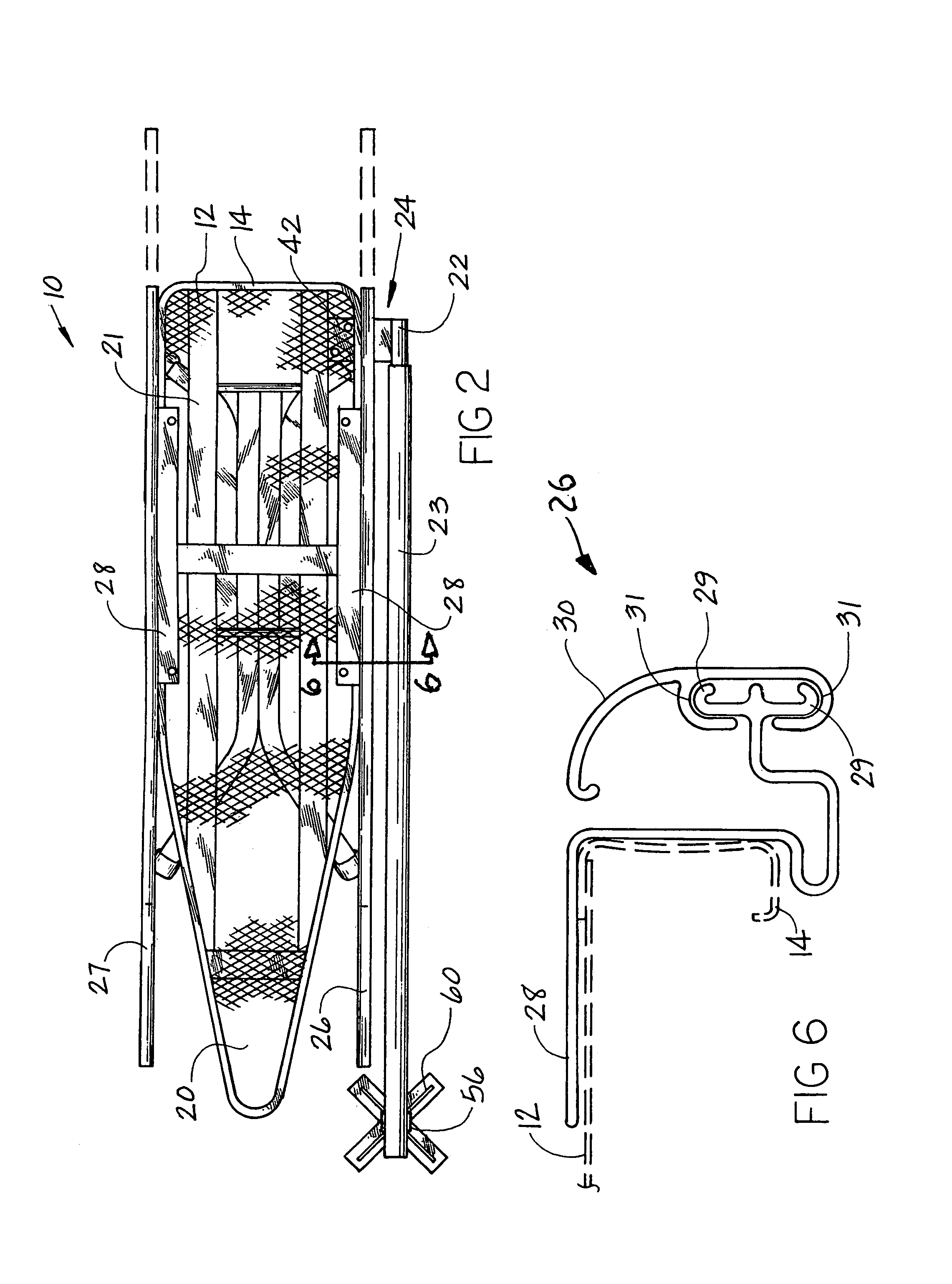Ironing board attachment apparatus
a technology for attachment apparatus and ironing boards, which is applied in the field of ironing boards, can solve the problems of limited length of conventional boards and more difficult process, and achieve the effects of preventing creasing of ironed fabrics, avoiding re-ironing, and removing creases
- Summary
- Abstract
- Description
- Claims
- Application Information
AI Technical Summary
Benefits of technology
Problems solved by technology
Method used
Image
Examples
Embodiment Construction
[0022]The ironing board attachment apparatus of the present invention and the ironing board are generally recognized by reference numeral 10. The ironing board itself is of conventional design including an expanded metal top surface 12 surrounded by a u-shaped cross-section frame 14. The board 10 is supported by conventional pivoting legs 16 and 17, each having a pair of feet 18, all of which is very well known in the art and, therefore, not described in detail.
[0023]Attached to one side of the ironing board 10, in parallel relation, is an extension arm 22 which is mounted to the board in a cantilevered fashion through a mounting bracket 24, shown in detail in FIGS. 3 and 5.
[0024]Attached to both sides of the ironing board 10, as best seen in FIG. 2, are identical shoulder arms 26 and 27. The shoulder arms are each mounted on a stationary bracket 28 which permits the shoulder arms to slide longitudinally along the edge of the ironing board along a rail 29 having two convex surfaces ...
PUM
 Login to View More
Login to View More Abstract
Description
Claims
Application Information
 Login to View More
Login to View More - R&D
- Intellectual Property
- Life Sciences
- Materials
- Tech Scout
- Unparalleled Data Quality
- Higher Quality Content
- 60% Fewer Hallucinations
Browse by: Latest US Patents, China's latest patents, Technical Efficacy Thesaurus, Application Domain, Technology Topic, Popular Technical Reports.
© 2025 PatSnap. All rights reserved.Legal|Privacy policy|Modern Slavery Act Transparency Statement|Sitemap|About US| Contact US: help@patsnap.com



